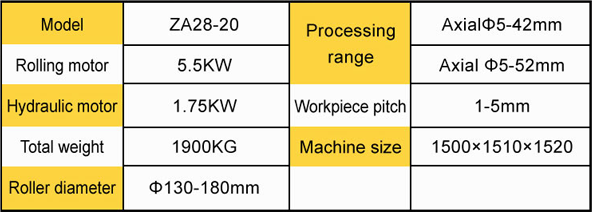
-
 Afrikaans
Afrikaans -
 Albanian
Albanian -
 Amharic
Amharic -
 Arabic
Arabic -
 Armenian
Armenian -
 Azerbaijani
Azerbaijani -
 Basque
Basque -
 Belarusian
Belarusian -
 Bengali
Bengali -
 Bosnian
Bosnian -
 Bulgarian
Bulgarian -
 Catalan
Catalan -
 Cebuano
Cebuano -
 Corsican
Corsican -
 Croatian
Croatian -
 Czech
Czech -
 Danish
Danish -
 Dutch
Dutch -
 English
English -
 Esperanto
Esperanto -
 Estonian
Estonian -
 Finnish
Finnish -
 French
French -
 Frisian
Frisian -
 Galician
Galician -
 Georgian
Georgian -
 German
German -
 Greek
Greek -
 Gujarati
Gujarati -
 Haitian Creole
Haitian Creole -
 hausa
hausa -
 hawaiian
hawaiian -
 Hebrew
Hebrew -
 Hindi
Hindi -
 Miao
Miao -
 Hungarian
Hungarian -
 Icelandic
Icelandic -
 igbo
igbo -
 Indonesian
Indonesian -
 irish
irish -
 Italian
Italian -
 Japanese
Japanese -
 Javanese
Javanese -
 Kannada
Kannada -
 kazakh
kazakh -
 Khmer
Khmer -
 Rwandese
Rwandese -
 Korean
Korean -
 Kurdish
Kurdish -
 Kyrgyz
Kyrgyz -
 Lao
Lao -
 Latin
Latin -
 Latvian
Latvian -
 Lithuanian
Lithuanian -
 Luxembourgish
Luxembourgish -
 Macedonian
Macedonian -
 Malgashi
Malgashi -
 Malay
Malay -
 Malayalam
Malayalam -
 Maltese
Maltese -
 Maori
Maori -
 Marathi
Marathi -
 Mongolian
Mongolian -
 Myanmar
Myanmar -
 Nepali
Nepali -
 Norwegian
Norwegian -
 Norwegian
Norwegian -
 Occitan
Occitan -
 Pashto
Pashto -
 Persian
Persian -
 Polish
Polish -
 Portuguese
Portuguese -
 Punjabi
Punjabi -
 Romanian
Romanian -
 Russian
Russian -
 Samoan
Samoan -
 Scottish Gaelic
Scottish Gaelic -
 Serbian
Serbian -
 Sesotho
Sesotho -
 Shona
Shona -
 Sindhi
Sindhi -
 Sinhala
Sinhala -
 Slovak
Slovak -
 Slovenian
Slovenian -
 Somali
Somali -
 Spanish
Spanish -
 Sundanese
Sundanese -
 Swahili
Swahili -
 Swedish
Swedish -
 Tagalog
Tagalog -
 Tajik
Tajik -
 Tamil
Tamil -
 Tatar
Tatar -
 Telugu
Telugu -
 Thai
Thai -
 Turkish
Turkish -
 Turkmen
Turkmen -
 Ukrainian
Ukrainian -
 Urdu
Urdu -
 Uighur
Uighur -
 Uzbek
Uzbek -
 Vietnamese
Vietnamese -
 Welsh
Welsh -
 Bantu
Bantu -
 Yiddish
Yiddish -
 Yoruba
Yoruba -
 Zulu
Zulu
Innovative Solutions for Precision Thread Rolling Tools to Enhance Manufacturing Efficiency
The Importance of High-Quality Thread Rolling Tools in Modern Manufacturing
In the fast-evolving world of manufacturing, high-quality tools are essential for ensuring precision and efficiency. Among these, thread rolling tools play a pivotal role in producing durable and precise threaded components. Unlike traditional cutting methods, thread rolling is a cold forming process that produces threads through the displacement of material rather than cutting it away. This not only enhances the strength of the threads but also minimizes waste, making it an environmentally friendly choice.
What are Thread Rolling Tools?
Thread rolling tools come in various forms, including flat and cylindrical dies, and they are used to create external threads on a variety of materials such as metals, plastics, and composites. The process involves applying pressure through the rolling dies to deform the material into the desired shape. This method is particularly favored in industries where high-volume production is common, such as automotive, aerospace, and electronics.
Advantages of High-Quality Thread Rolling Tools
1. Enhanced Strength and Durability One of the primary benefits of using high-quality thread rolling tools is the enhanced strength of the resulting threads. The cold forming process hardens the material, leading to threads that can withstand higher levels of stress and strain. This durability is critical in applications where components are subjected to extreme conditions.
2. Precision and Consistency High-quality tools provide a level of precision that is difficult to achieve through conventional cutting methods. The rolling process ensures that each thread is uniform in size and shape, which is vital for ensuring tight tolerances and compatibility with other components. This consistency reduces the likelihood of defects and rework, ultimately saving time and resources.
high quality thread rolling tool

3. Reduced Material Waste With traditional cutting processes, a significant amount of material can be wasted during the machining of threads. However, thread rolling tools displace the material rather than remove it, resulting in significantly less waste. This not only contributes to a more sustainable manufacturing process but also reduces costs associated with raw materials.
4. Improved Surface Finish High-quality thread rolling tools produce components with superior surface finishes. The smooth, cold-formed threads are often free from burrs and imperfections, reducing the need for additional finishing processes. This can accelerate production timelines and lower operational costs.
5. Versatility High-quality threading tools can be utilized with various materials, making them suitable for numerous applications. From soft metals like aluminum to harder materials such as stainless steel and titanium, thread rolling tools can adapt to different requirements, further enhancing their manufacturing capabilities.
Choosing the Right Thread Rolling Tools
Selecting the right thread rolling tools is crucial for maximizing production efficiency and quality. Manufacturers should consider several factors, including the type of material, the required thread dimensions, and the production volume. Investing in high-quality tools from reputable suppliers is essential, as this ensures reliability and performance in the long run. Regular maintenance and adherence to quality standards can further extend the lifespan of these tools and maintain their effectiveness.
Conclusion
In conclusion, high-quality thread rolling tools are an indispensable part of modern manufacturing. Their ability to produce strong, precise, and consistent threaded components with minimal waste makes them a superior choice over traditional cutting methods. As industries continue to push for higher quality and efficiency, the importance of investing in advanced thread rolling technology cannot be overstated. Embracing these tools will not only enhance the manufacturing process but also contribute to a more sustainable and competitive production environment.
